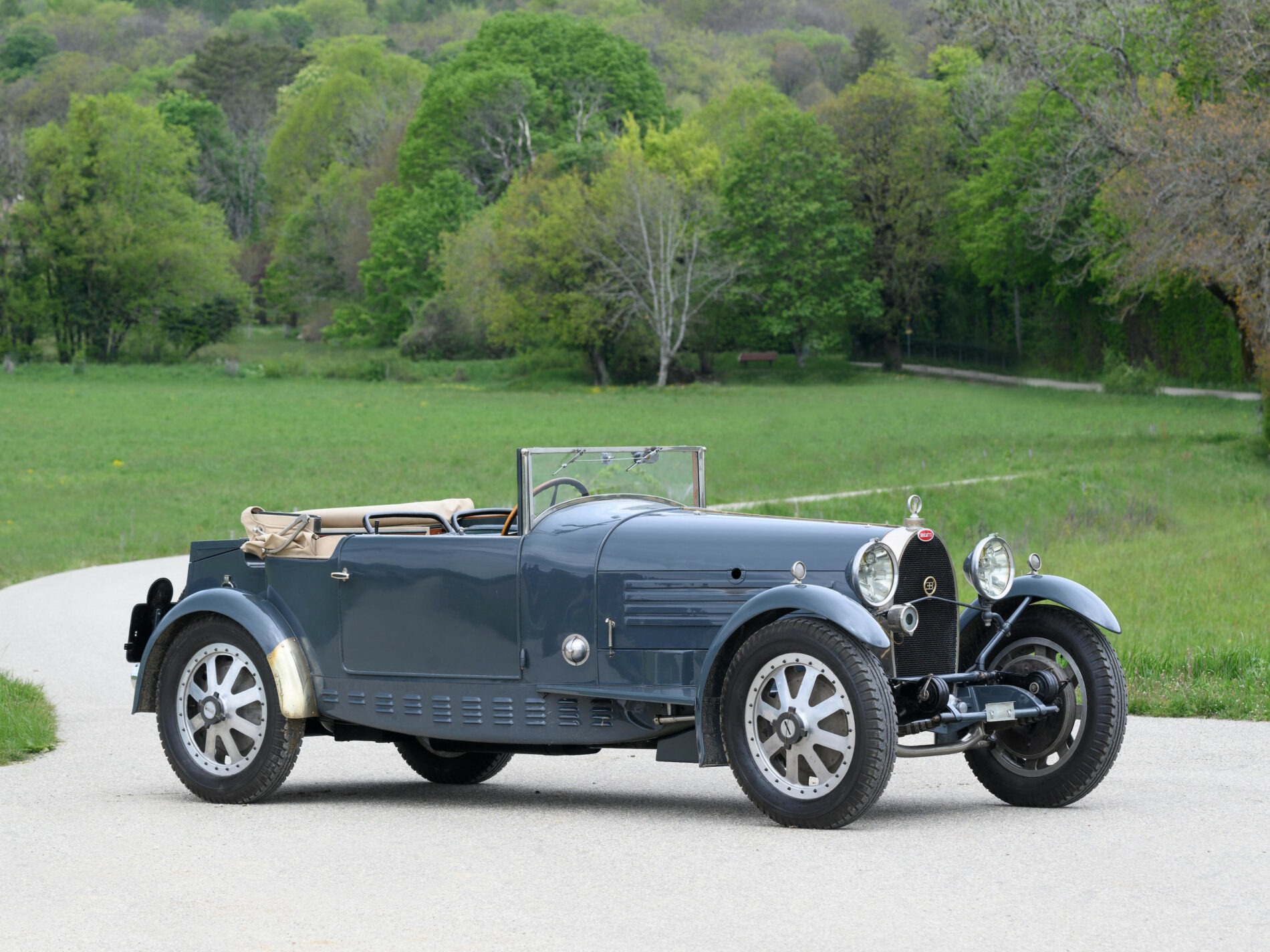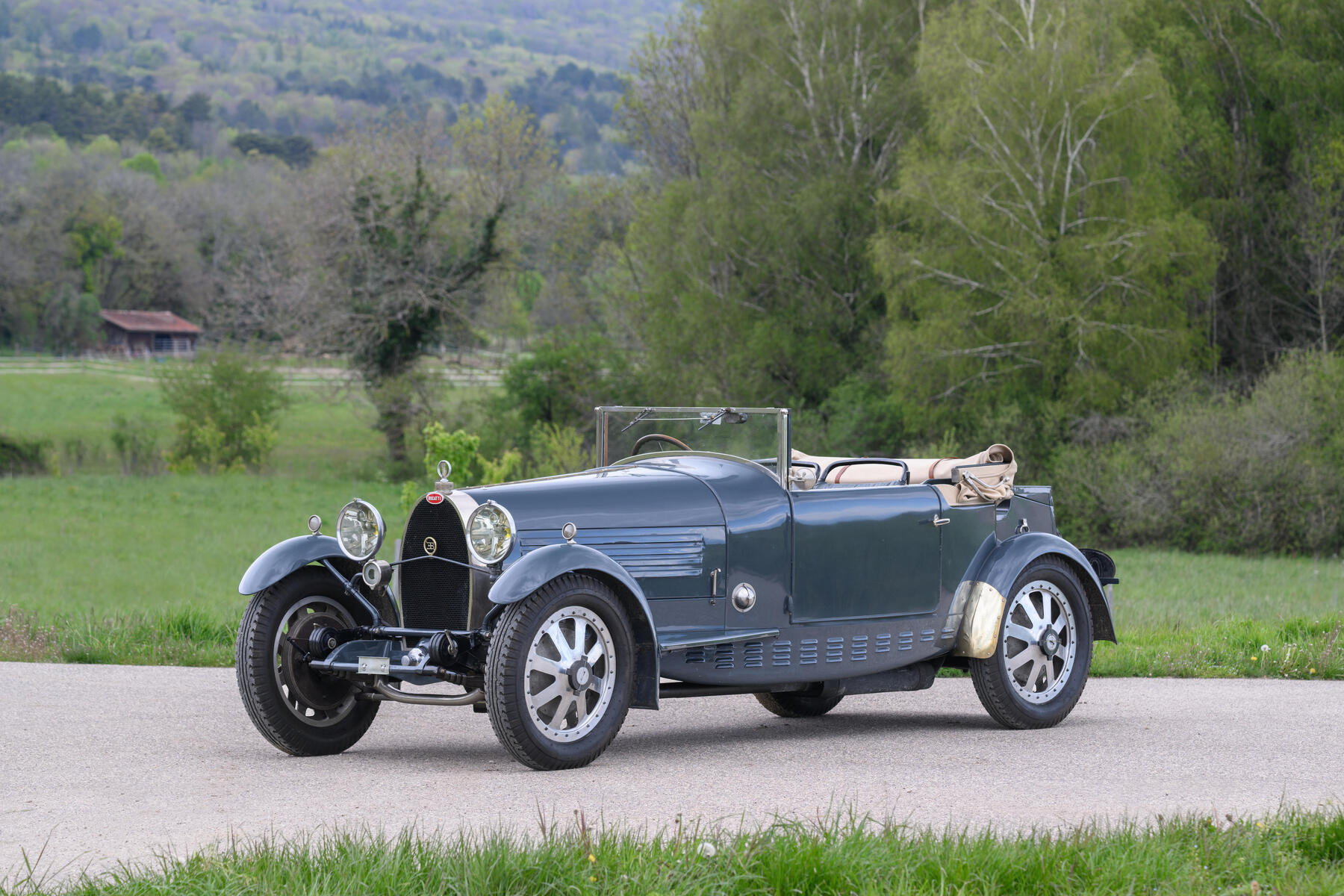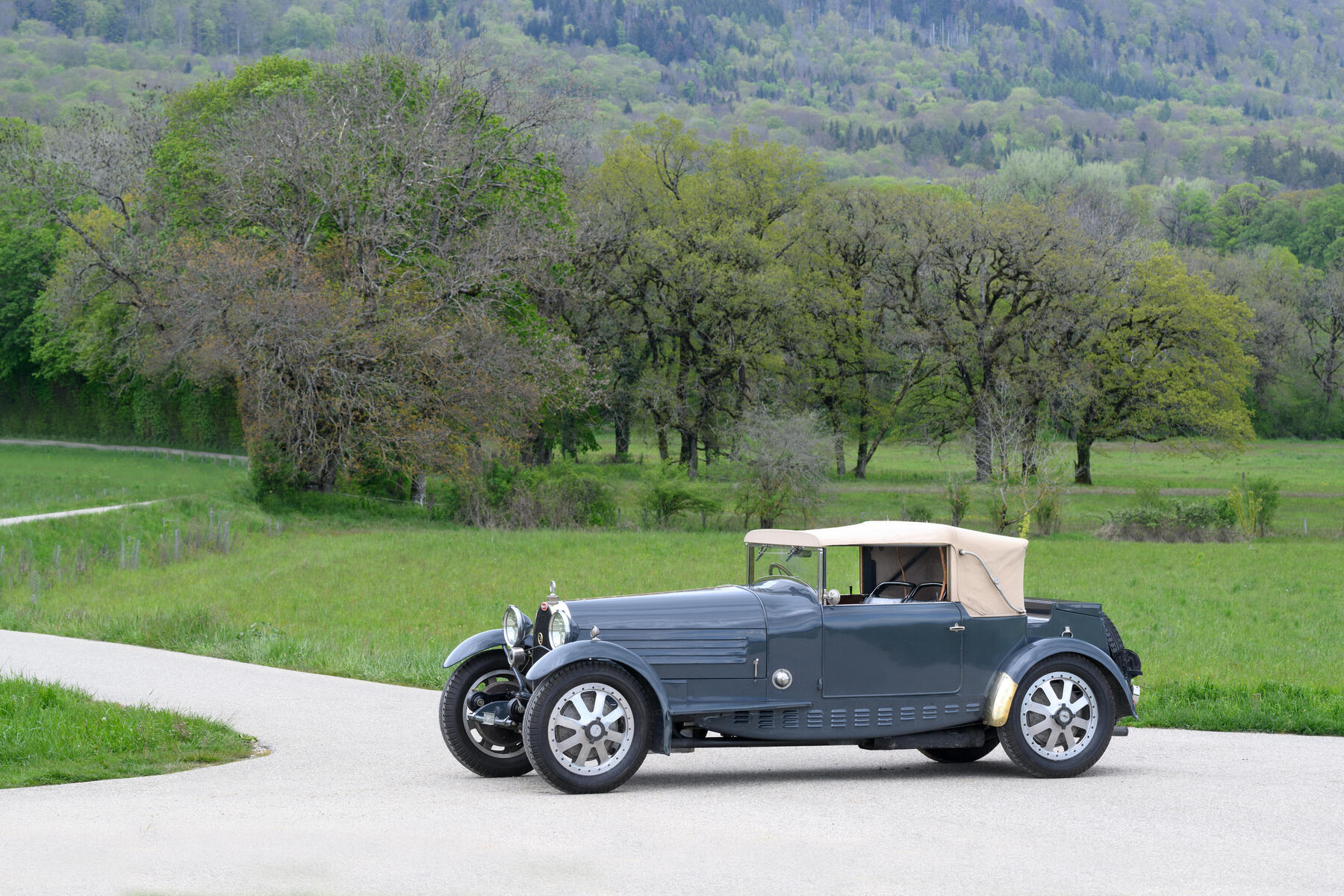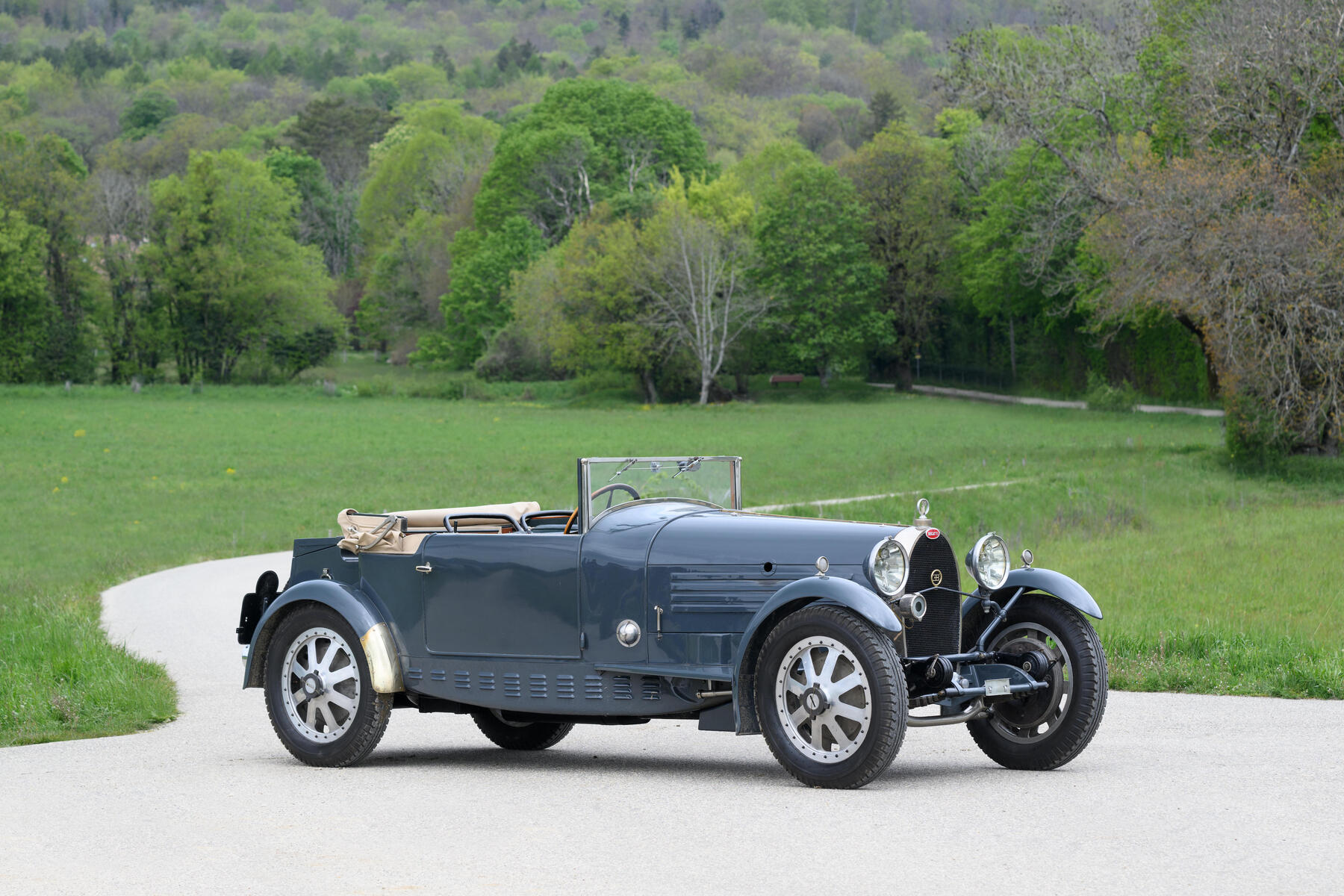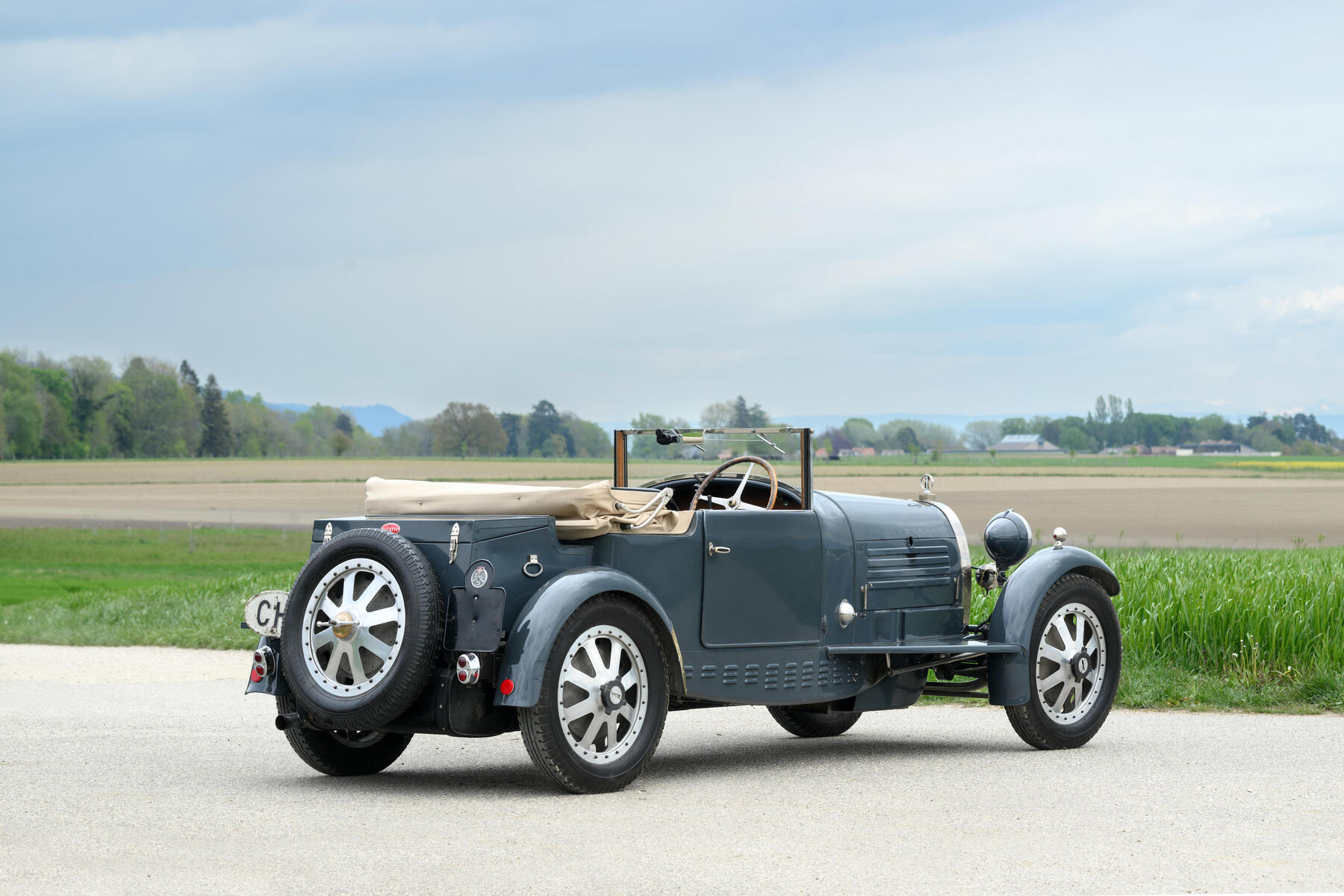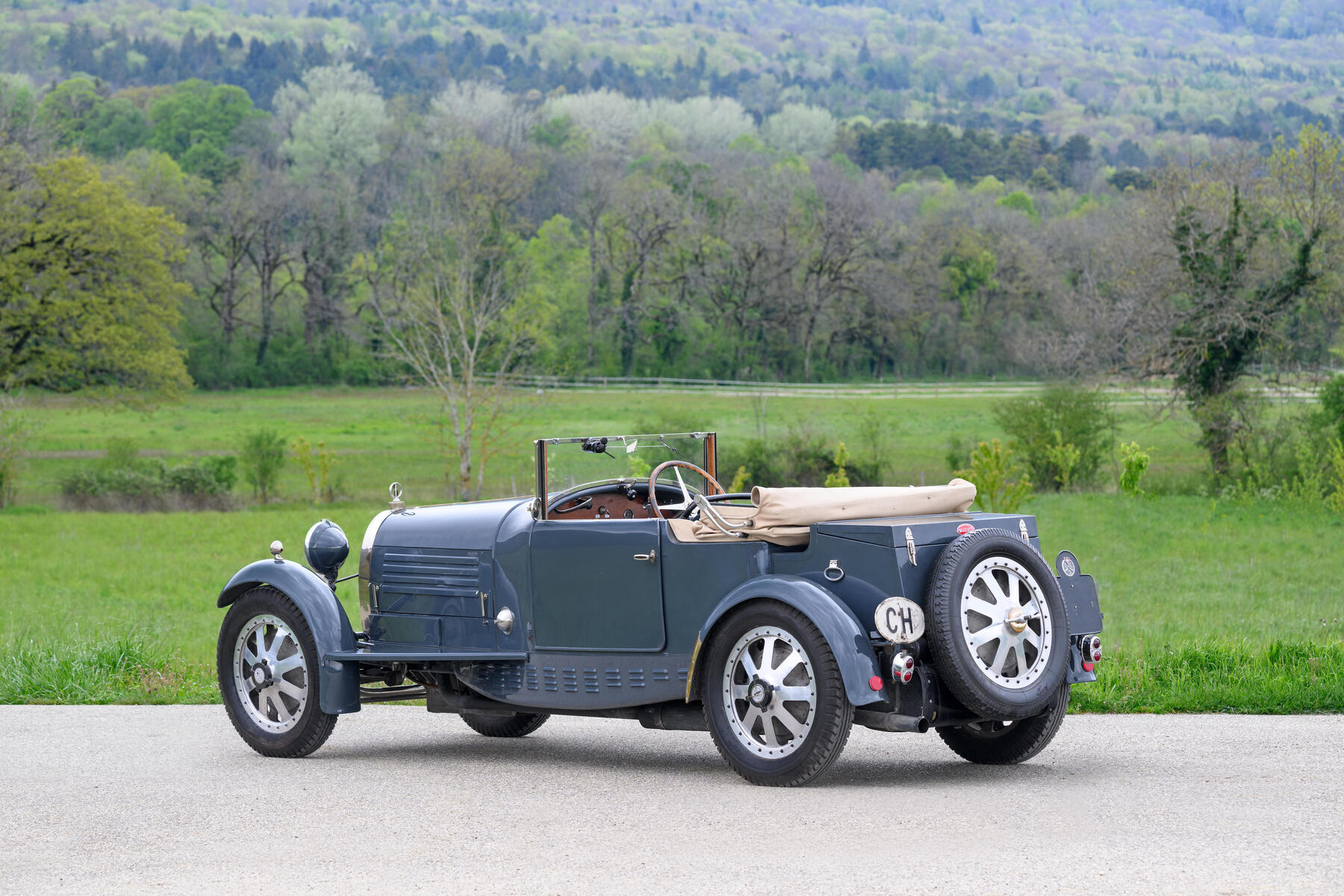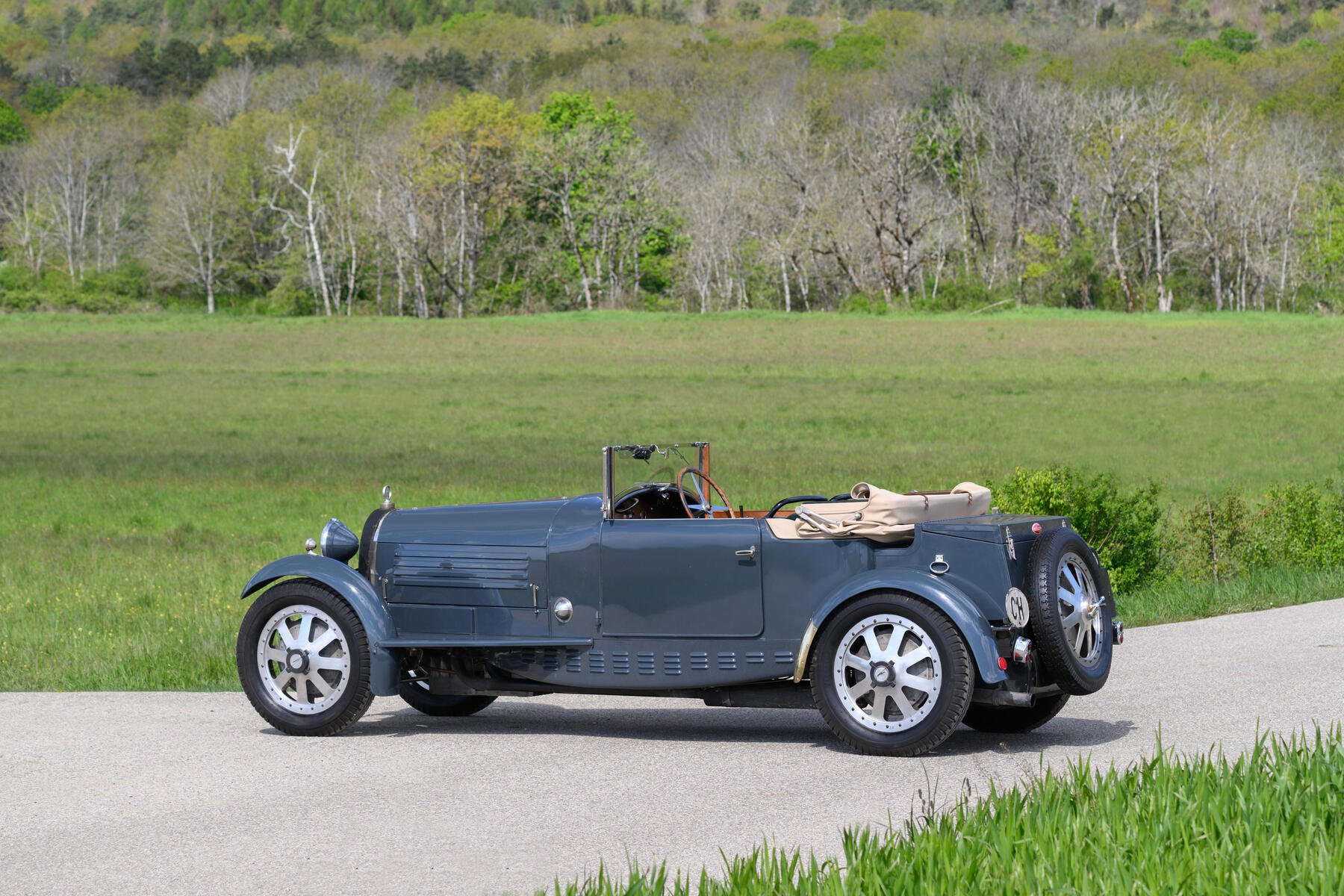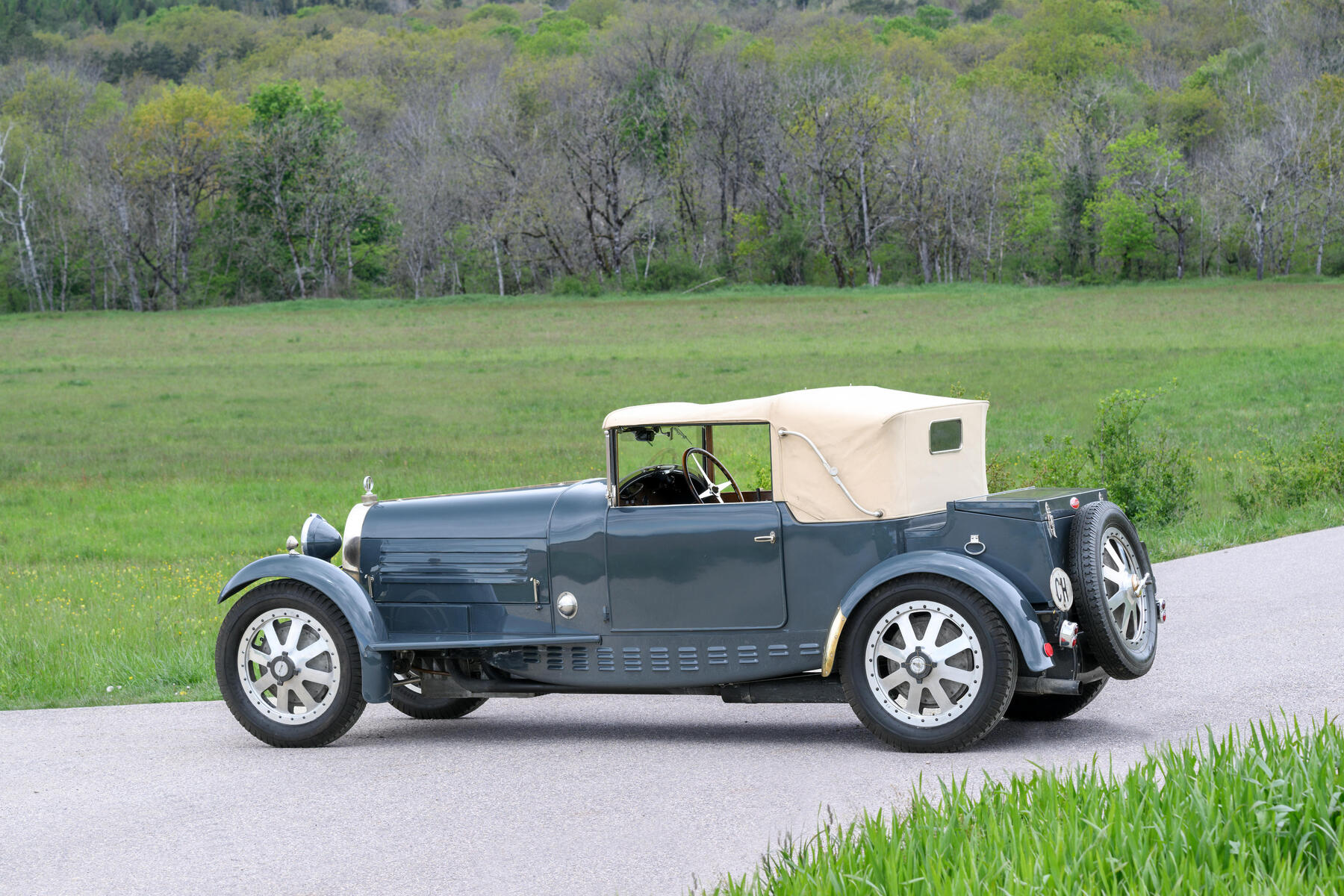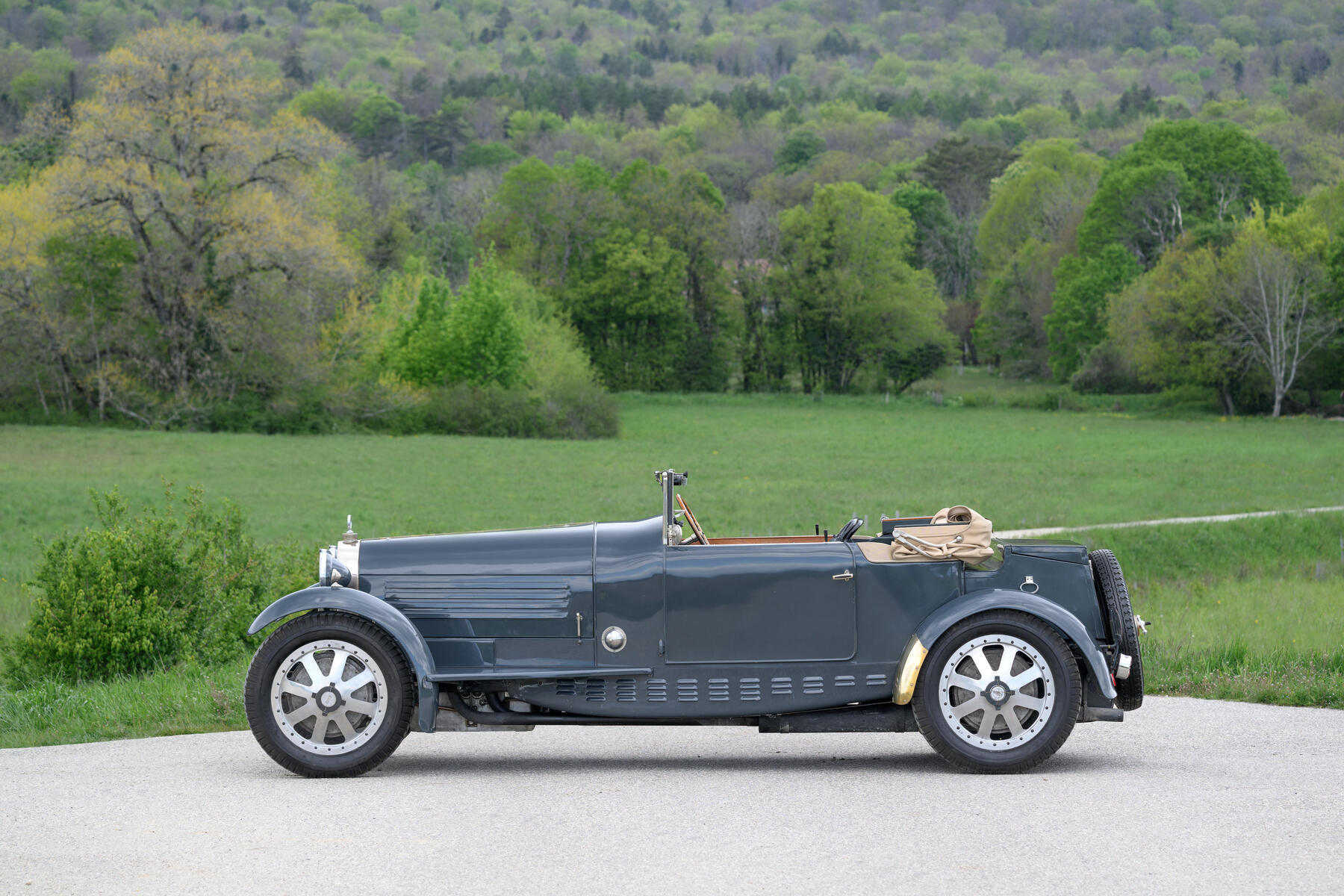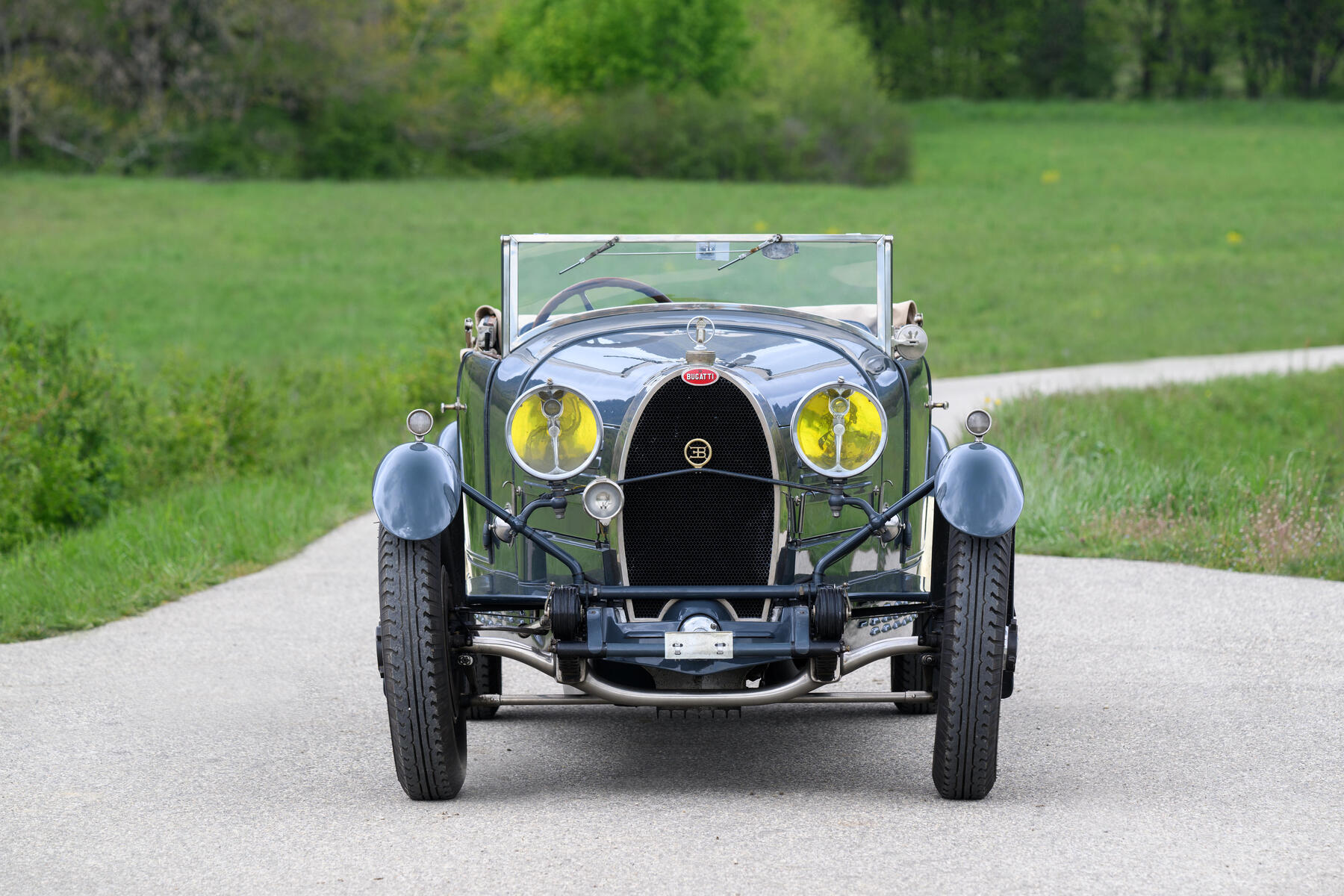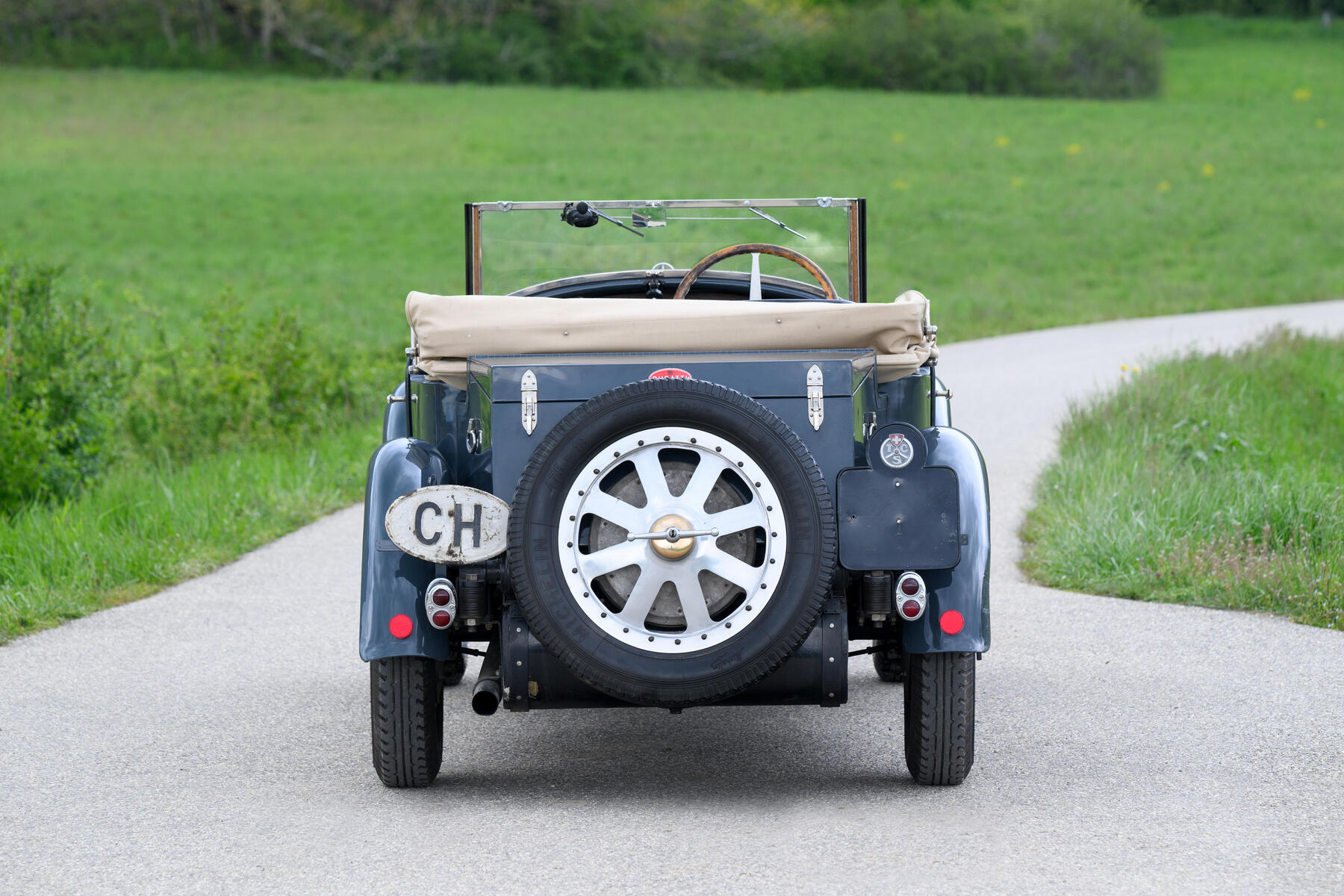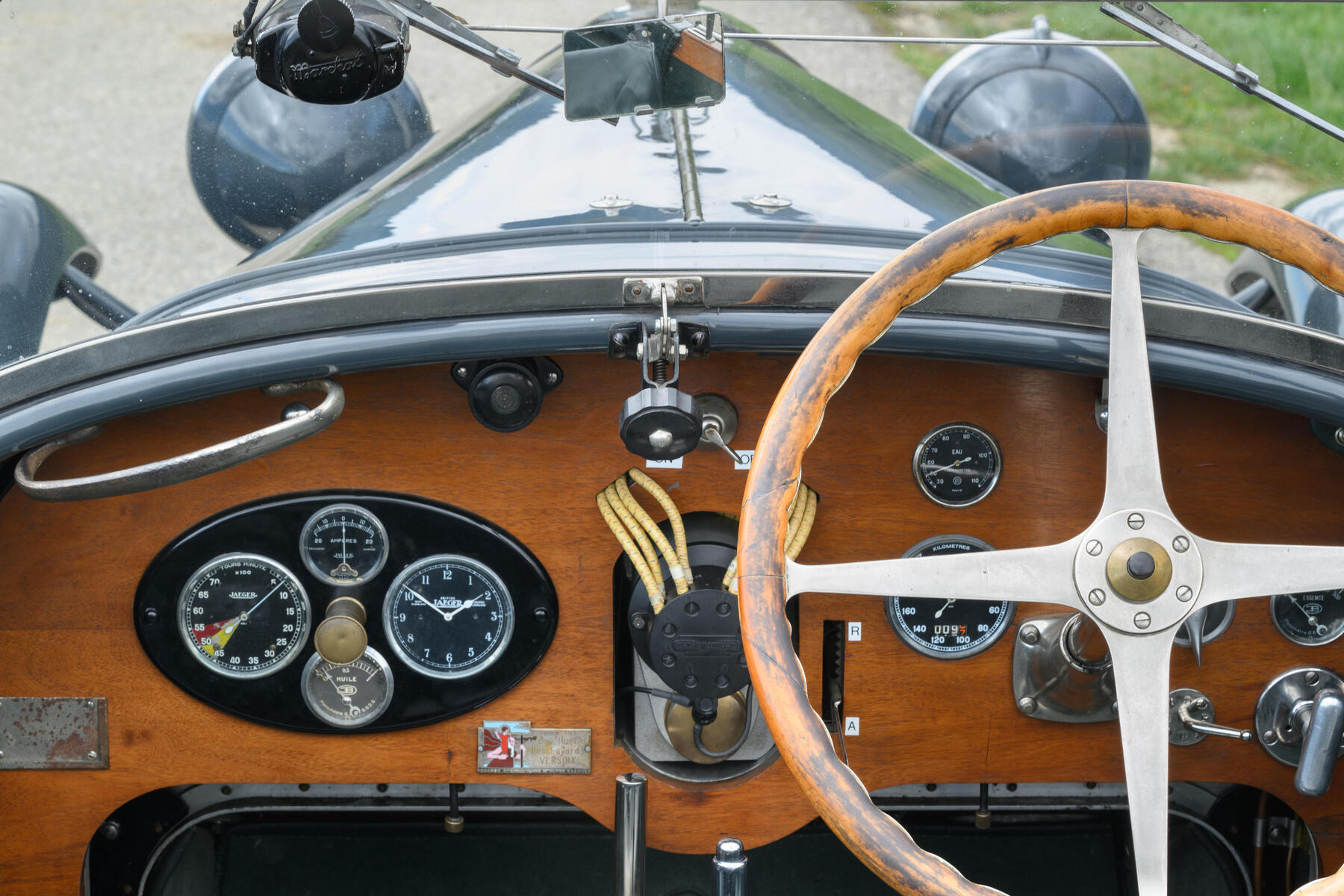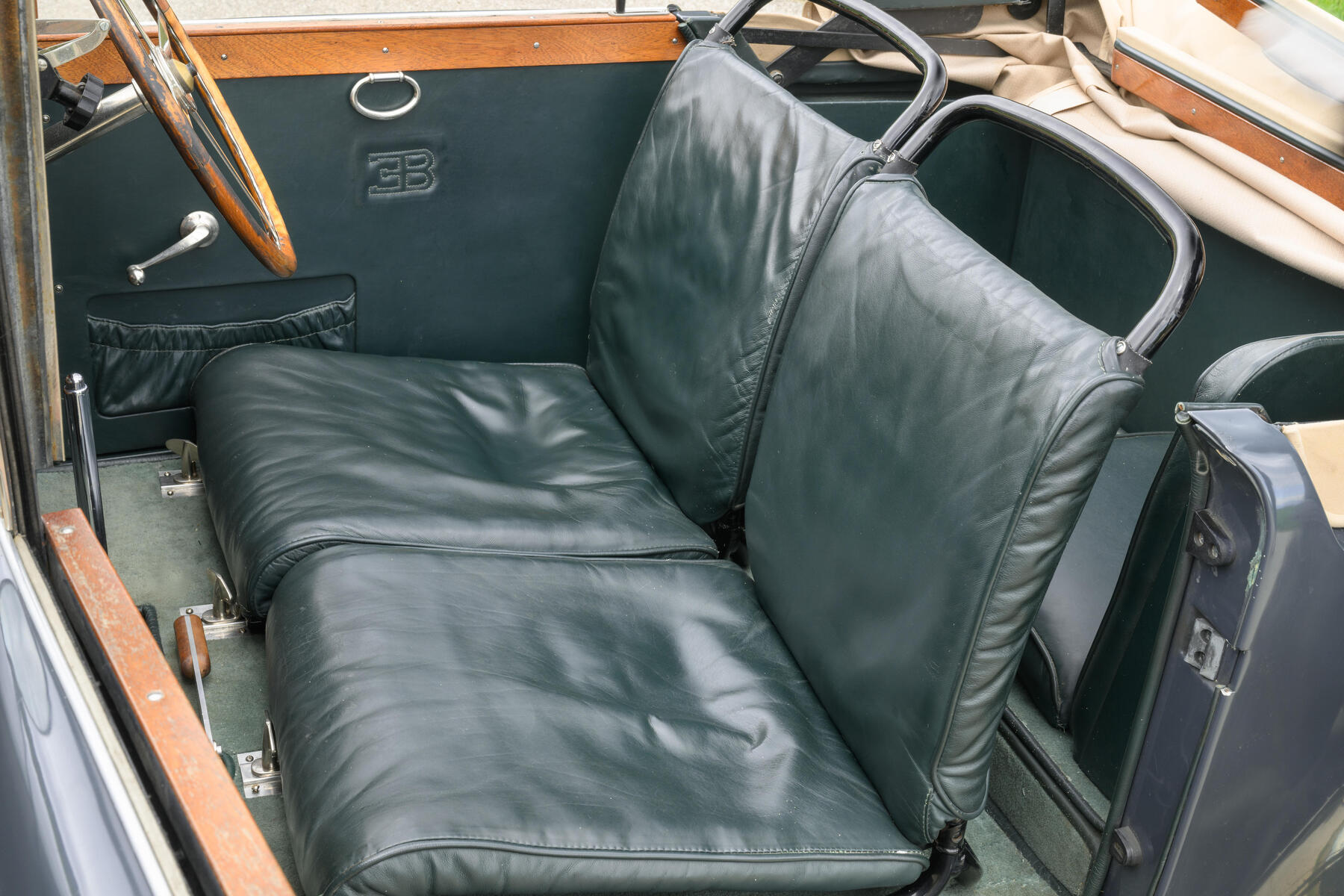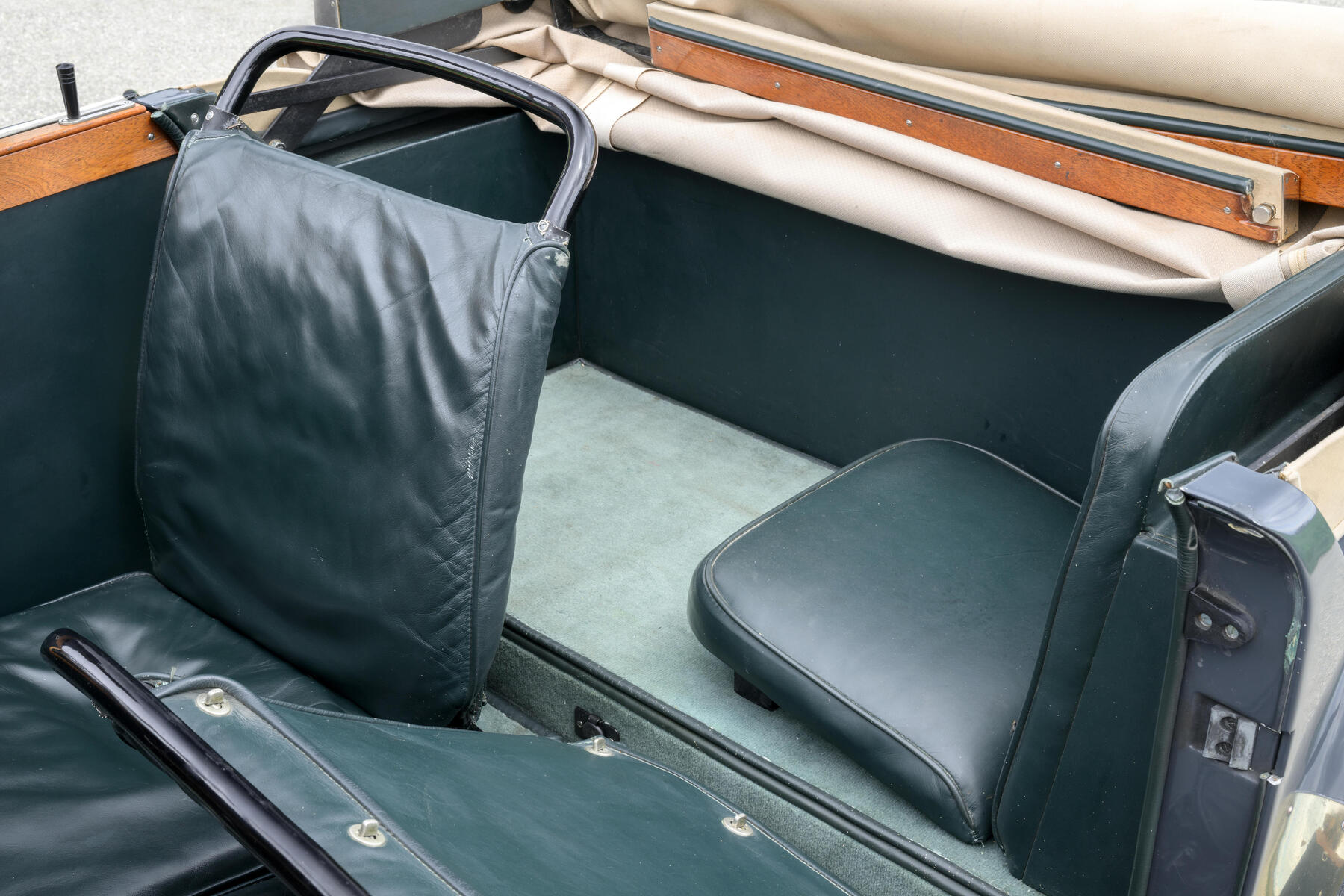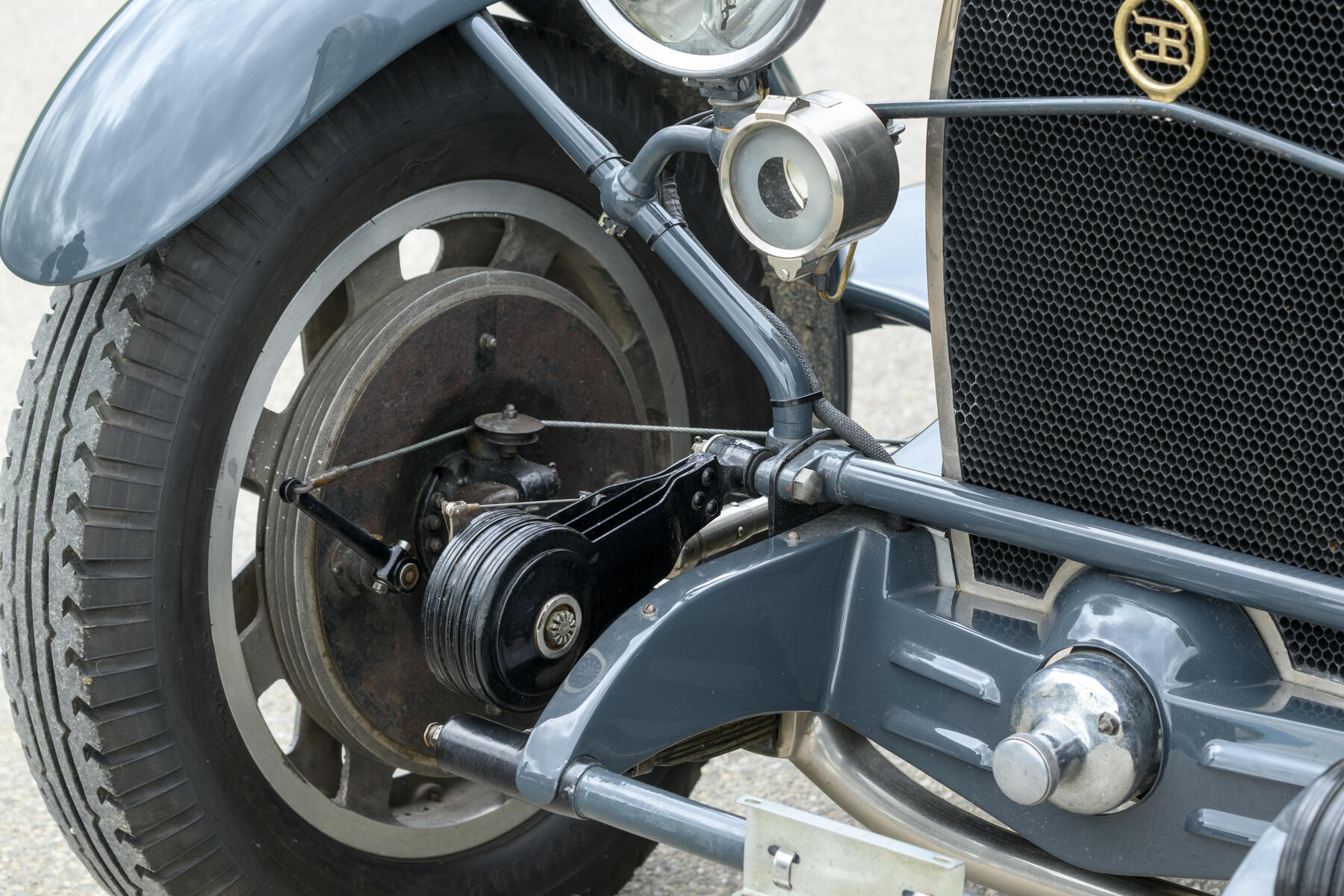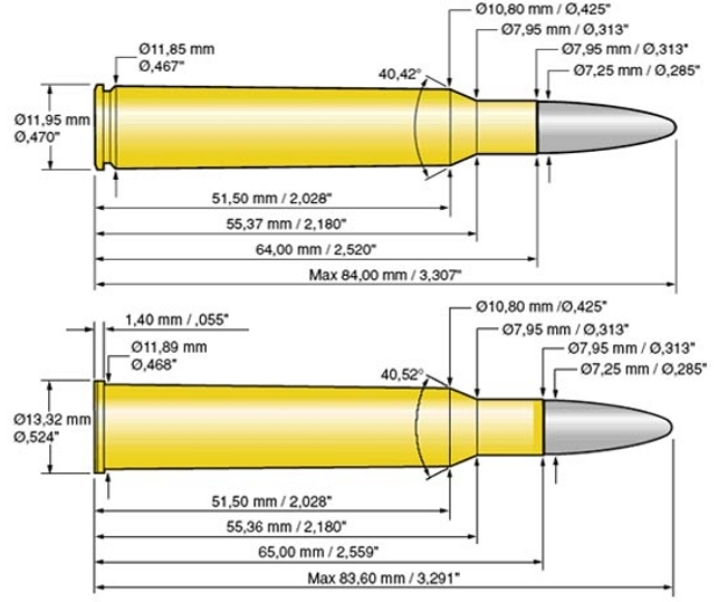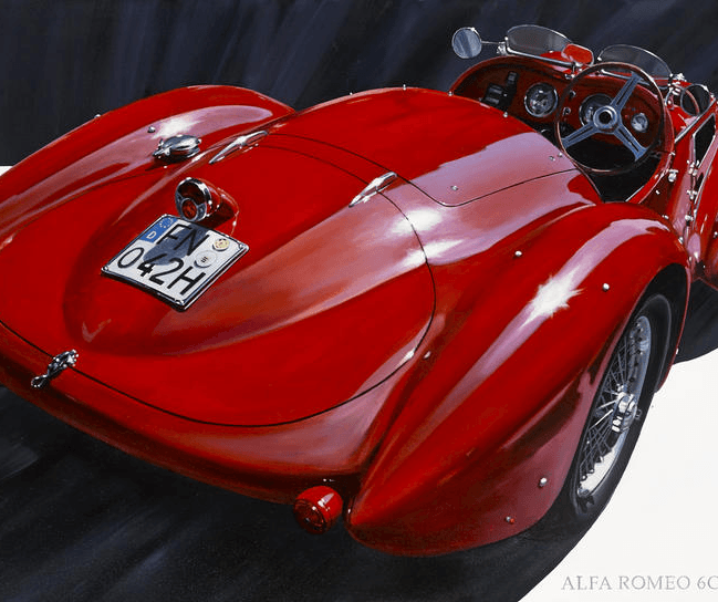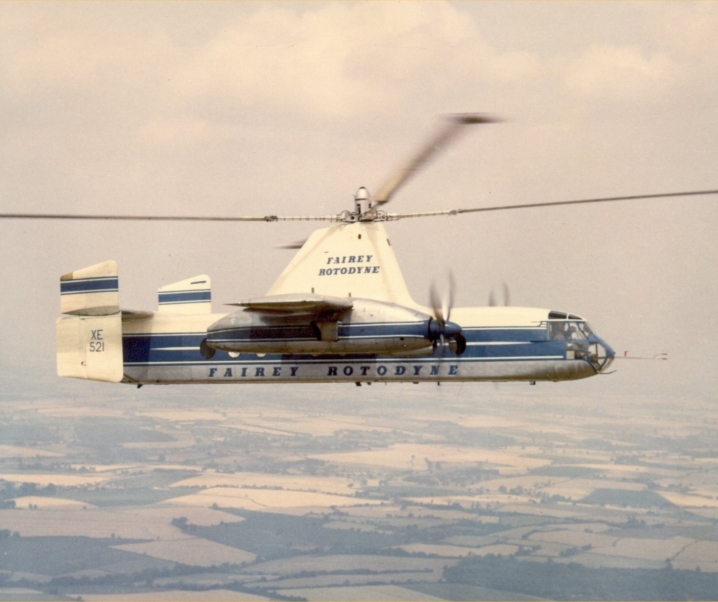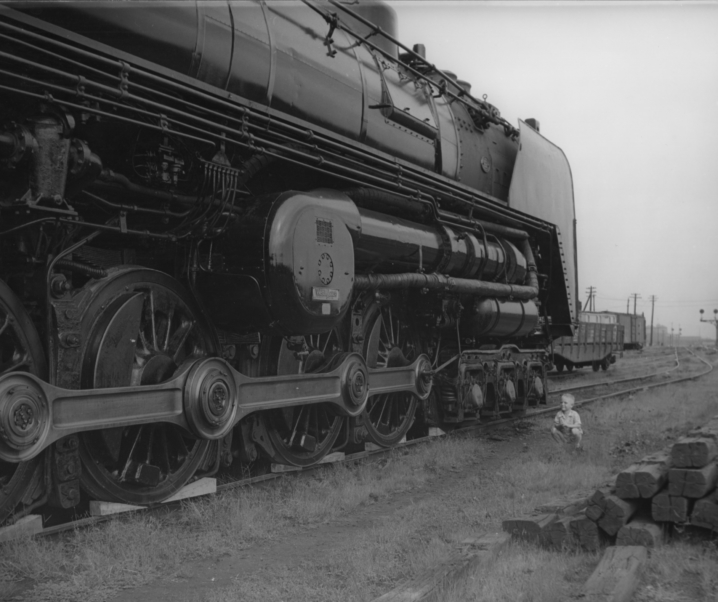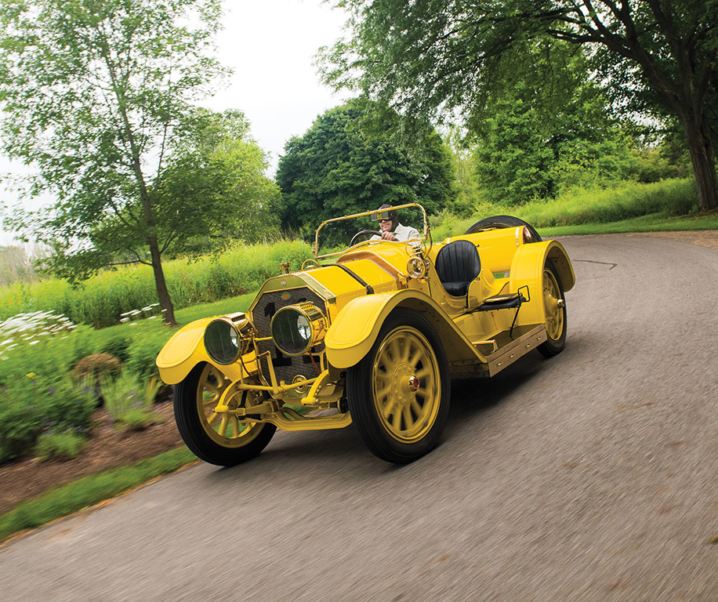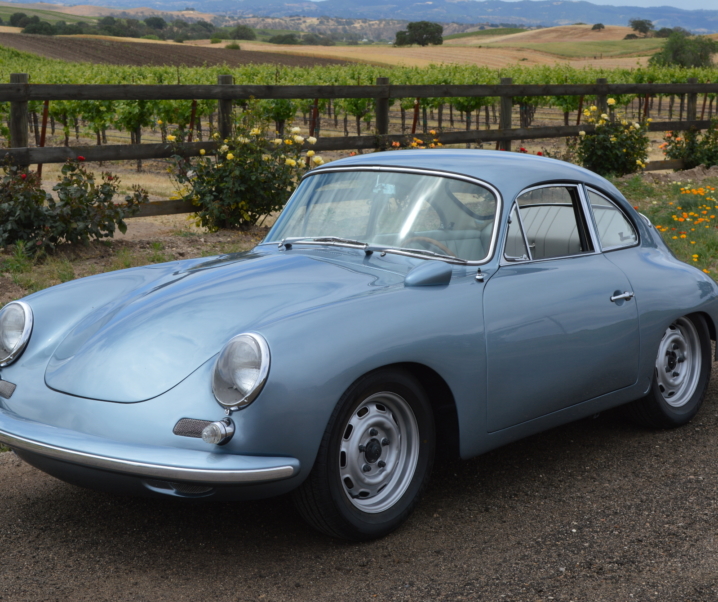The Bugatti Type 43 was a skilful blending of the best of Ettore Bugatti’s racing cars of the 1920’s with a longer chassis suited to road touring. With its 2.3 liter supercharged straight eight engine the Type 43 was an exciting and fleet-footed automobile that gave its driver the full Bugatti experience in a thoroughly thought out touring car.
Fast Facts
- The Bugatti Type 43 was a blending of the supercharged engine of the Type 35B racing car (de-tuned a tad) with the longer Type 38 chassis.
- The Type 43 came from the factory able to attain or exceed 100mph and is thought to have been the first production car to have been able to make this claim.
- A restored Type 43 is coming up for sale by Bonhams at their The Bonmont Sale, to be held in Cheserex, Switzerland, on June 30, 2024
Ettore Bugatti stands out as one of the great automotive engineers of the classic era, the 1920’s and 1930’s. But Bugatti was really more than an engineer – he was a man who brought art into engineering and merged them into a cohesive whole.
Bugatti turned his capacity for engineering art into a number of fields and although he is primarily known for his automobiles he also created high performance and fashionable passenger railcars, an aircraft, and even a range of surgical instruments.
Among Bugatti’s many automobiles the Type 43 is one that stands out. It was a blending of a de-tuned supercharged 2.3 liter (2,262 cc/138 cu. in.) SOHC three-valve straight eight racing engine as used in the Type 35B nestled into a Type 38 chassis. This lightweight car with its 120hp @ 5,000rpm engine became the first production car to leave the factory able to make or exceed 100mph: and not only that but it accomplished this with the orchestral sound of a Bugatti supercharged straight eight.
Actual top speed – depending on the bodywork fitted – was apparently actually close to 110mph.
Driving the Type 43 was also a challenge requiring knowledge, skill, and an artistic sensitivity to the car’s characteristics. Things had to be done manually to extract the best from the engine, and from the car itself. The driving experience has been described as being a bit like playing a church pipe organ, except that the wind in your hair lets you know you are going rather quickly: an experience even more adrenaline pumping than playing Wagner’s “Flight of the Valkyries” on the pipe organ.
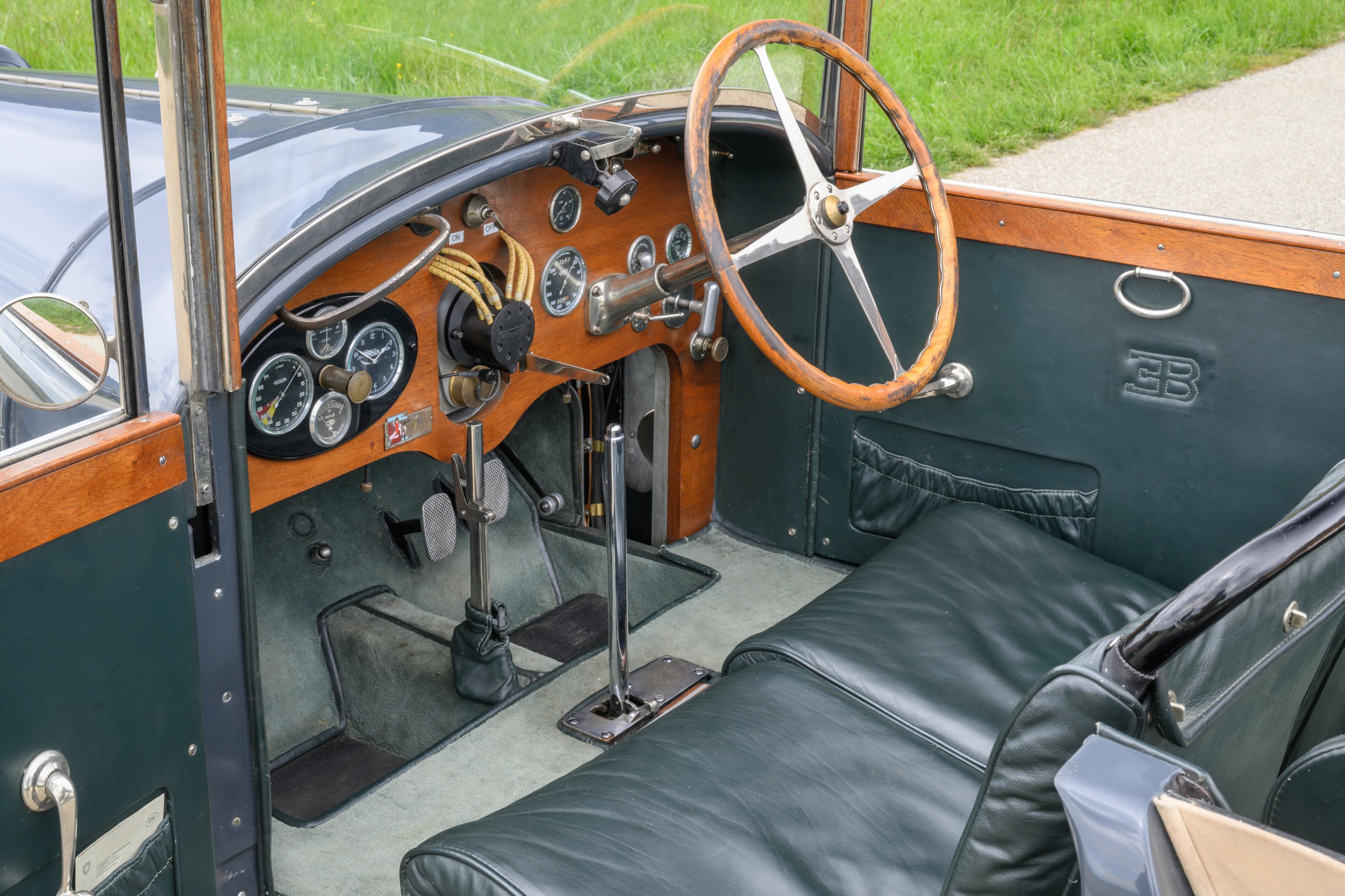
The Bugatti Type 43 accelerated from standing to 60mph in 12 seconds and could happily go from 20mph to its top speed in top gear.
The supercharger was of the Roots type and the brakes were mechanically operated drums: Ettore Bugatti was not a fan of hydraulic brakes firmly believing in the superiority of mechanical brakes.
Legend has it that a customer once complained to Bugatti about the brakes on his cars to which Bugatti retorted “I make my cars to go, not to stop”.
All that being said the Bugatti mechanical brakes worked at least as well as the brakes on any other car on the road at that time without fear of brake fluid boiling, leaking, or committing any of the nasty sins that hydraulic brakes can be guilty of.
The wheels used on the Type 43 were the alloy wheels as used on the Bugatti racing cars.
The car weighed a little over 2,428lb (1,100kg) and at that light weight performance was brisk and handling quite delightful.
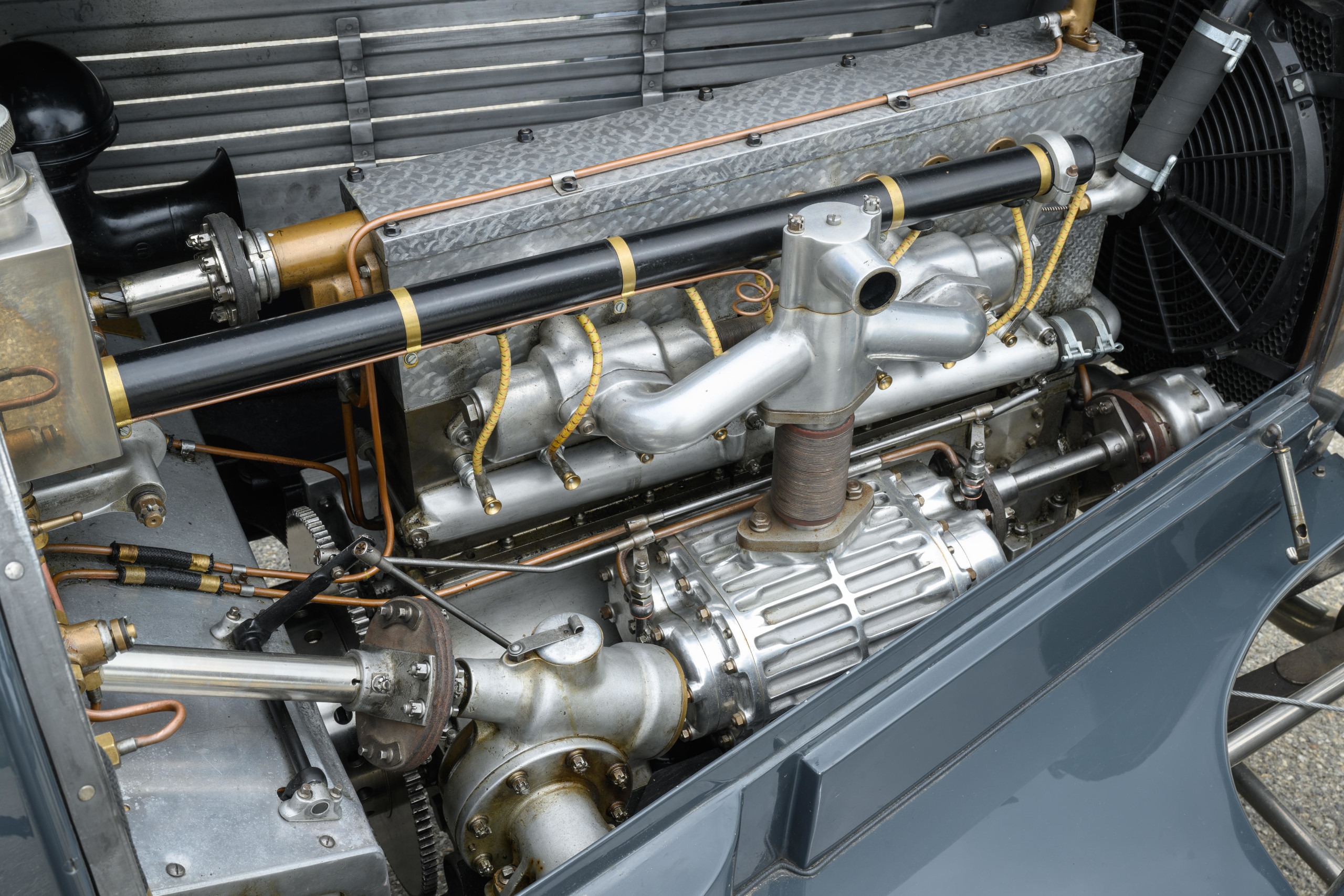
In 1929 one of the Bugatti Type 43 was earmarked to be given away to the winner of the second Grand Prix Bugatti, which took place on 1 June 1929 on the Le Mans racing circuit.
There were sixteen competitors entered for this race, all driving Bugatti cars divided into five competition classes. These comprised one Type 35B, two Type 35C, six Type 35, four Type 37A and three Type 37.
The winner of the race – and winner of the Type 43 – was Italian-Chilean driver, Juan Zanelli who campaigned a Type 35.
But as it turned out Juan Zanelli actually preferred to ask if he could swap the prize Bugatti Type 43 Torpédo Grand Sport chassis number 43264/124 for a Type 35B, which was more useful to him for racing.
Bugatti agreed to that bit of horse-trading which left the prize car looking for a new home.
The Type 43 joined the other new cars at the rue du Débarcadère warehouse listed as “2L 300 Grand Sport n° 43264” along with two other Type 43s, four Type 44s and a 35A.
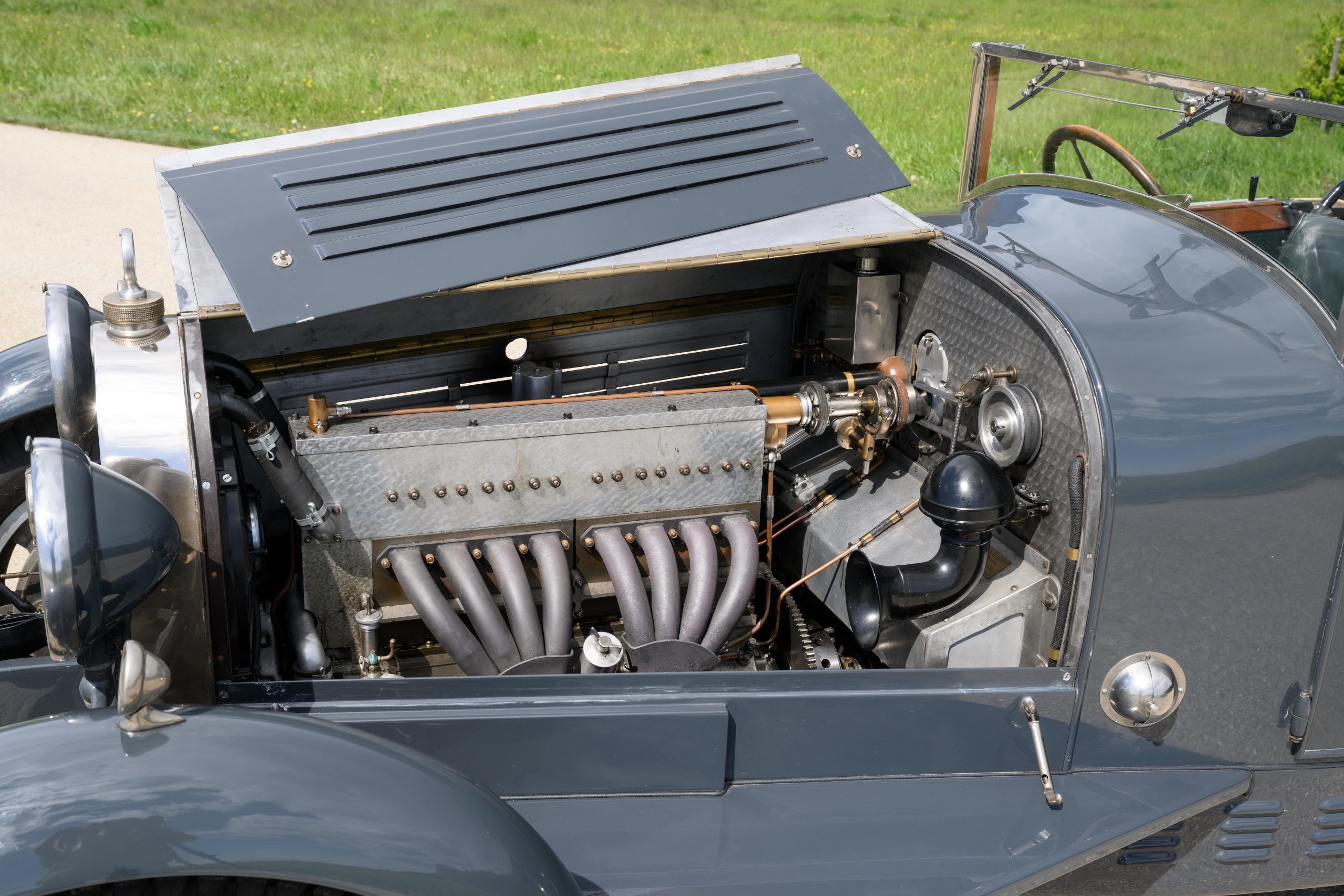
In a turn of fate chassis number 43264 was once again to be the subject of a bit of horse-trading.
American driver Léon Duray (who’s real name was George Stewart) came to France bringing with him cars with which to set some speed records.
Duray used two Miller Type 91 front-wheel cars to put in some impressive performances, and Ettore Bugatti was very much impressed by the two Miller cars.
So Ettore Bugatti got into negotiations with Léon Duray with a view to obtaining the two American Miller Type 91 cars. Duray must have been a determined negotiator and in the end he allowed himself to be persuaded to trade Ettore Bugatti the two Miller cars for no less than four Bugatti Type 43, one of which was chassis number 43264.
Bugatti also gave Léon Duray representative status in New York where he opened a Bugatti dealership.
So chassis number 43264 sailed away across the Atlantic Ocean with its three siblings to New York. As the poem in the Statue of Liberty says “… Send these, the homeless, tempest-tossed to me, …”: and indeed the four homeless Bugatti Type 43 found homes in the New World.
From there chassis number 43264 went through a series of owners in a story not all that different to the fate suffered by the horse in Anna Sewell’s novel “Black Beauty”.
This story included the car having many of its original Bugatti parts removed and replaced with Ford components. In 1947 the then owner, the actor Donald O’Connor, who won a Golden Globe for his performance with Gene Kelly in “Singing in the Rain”, had the gorgeous Bugatti supercharged straight eight removed and replaced with a Ford straight six engine that had been heavily re-engineered by Ed Iskenderian, who specialized in Hot Rod engines.
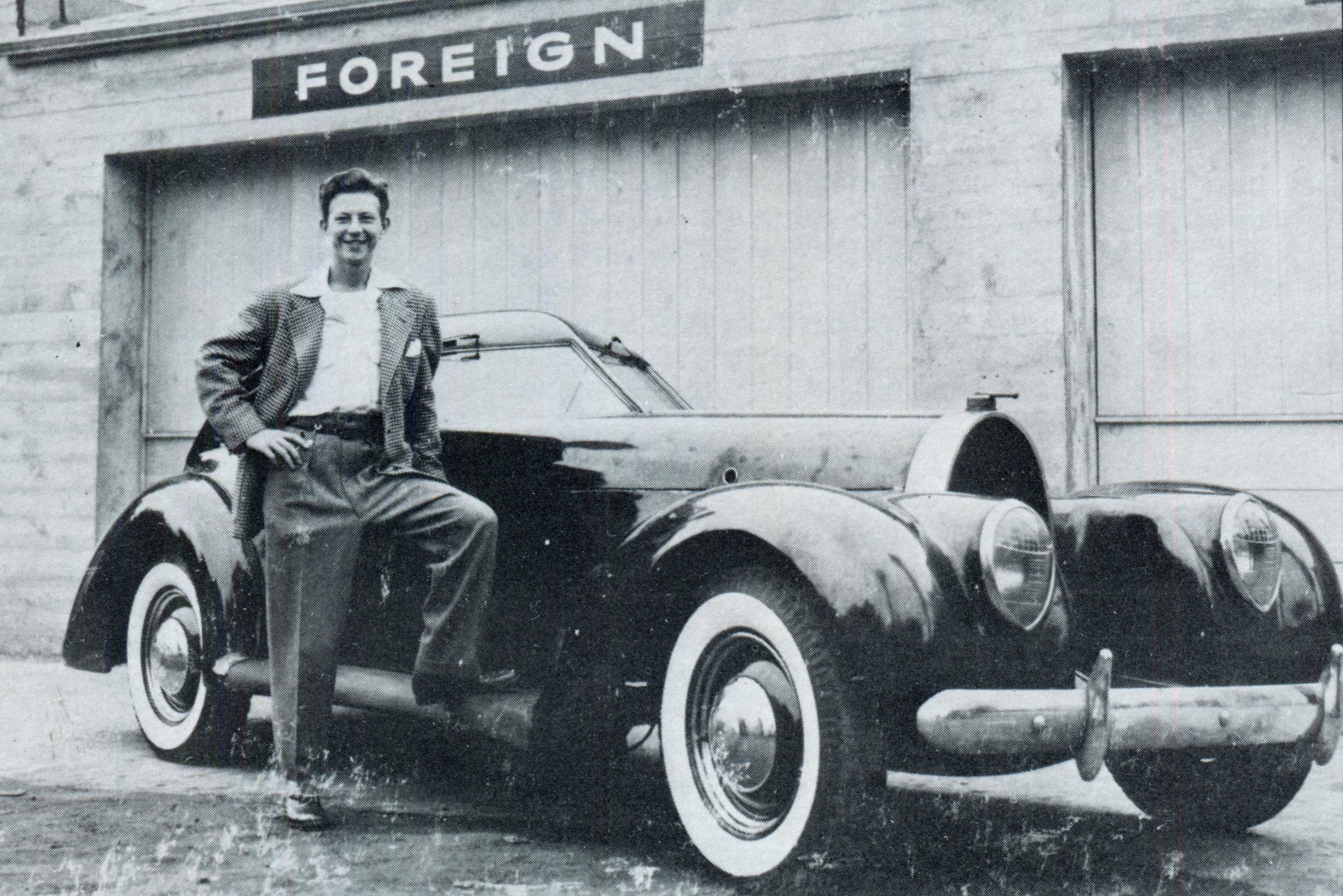
Horrifying though this may sound we need to remember that by that time Bugatti was out of business and Ettore Bugatti passed away that year. So removing the parts that were no longer obtainable and replacing them with Ford parts that were easy to find made a great deal of sense.
The story of the car, like that of “Black Beauty”, sees it falling into disrepair and neglect over the decades but it was saved at last in around 2008 by English restoration specialist Robin Townsend, associated with the purchase for collector Michael Steele.
So it was from that time that for this Bugatti Type 43 the saga of its journey and life in the New World did not end in a scrap yard. Instead the car was been treated to a thorough re-building to resurrect it from its past and give it a bright new future – just as the horse “Black Beauty” is given a bright new future after a lifetime of heavy use.
This Bugatti Type 43 was sold to its current owner in December 2008 who commissioned that restoration, and it is now made new again restored to its former glory.
This car, now restored, is coming up for sale by Bonhams at the Bonmont Sale, to be held in Cheserex, Switzerland, on June 30, 2024.
Picture Credits: All pictures courtesy Bonhams

Jon Branch is the founder and senior editor of Revivaler and has written a significant number of articles for various publications including official Buying Guides for eBay, classic car articles for Hagerty, magazine articles for both the Australian Shooters Journal and the Australian Shooter, and he’s a long time contributor to Silodrome.
Jon has done radio, television, magazine and newspaper interviews on various issues, and has traveled extensively, having lived in Britain, Australia, China and Hong Kong. His travels have taken him to Indonesia, Israel, Italy, Japan and a number of other countries. He has studied the Japanese sword arts and has a long history of involvement in the shooting sports, which has included authoring submissions to government on various firearms related issues and assisting in the design and establishment of shooting ranges.

